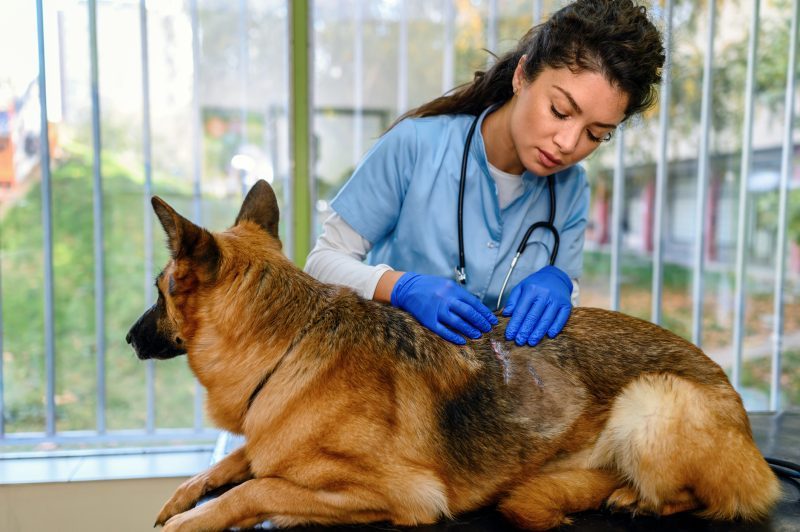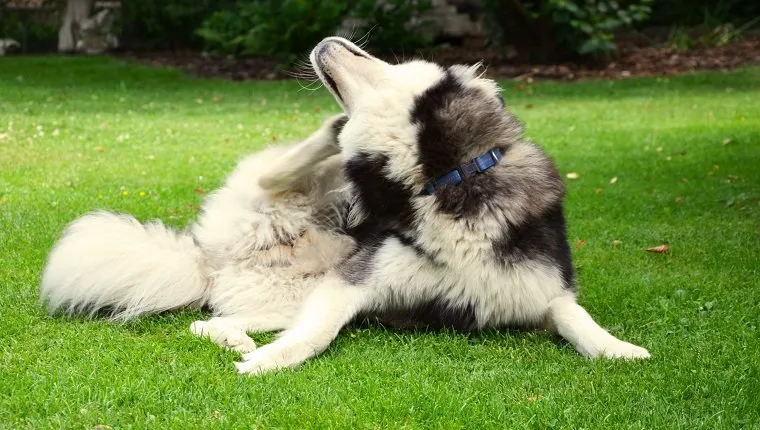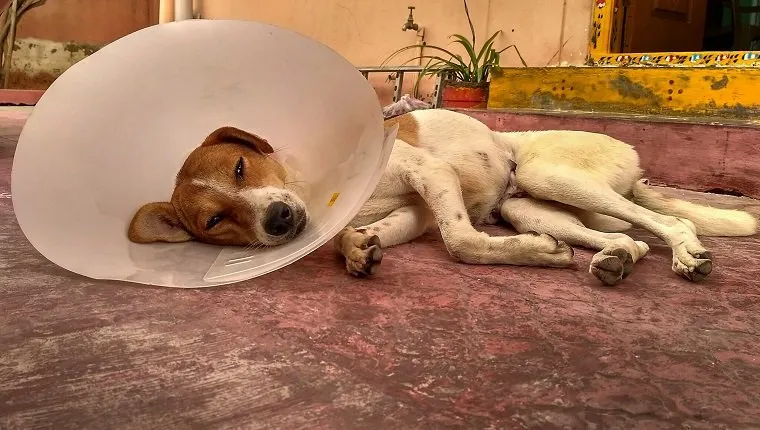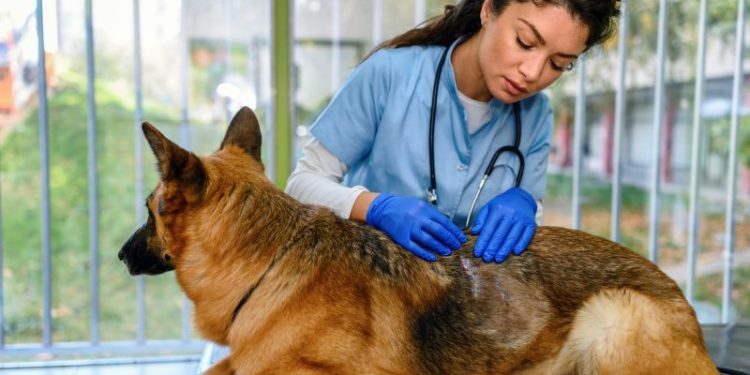
Staph infections in dogs are caused by Staphylococcus bacteria and mostly appear as skin infections at the sites of wounds or irritation, though they can affect nearly any part of the body.
Symptoms of a staph infection of the skin usually include pus, redness, crusting, and sensitivity in the skin surrounding the wound or irritant. Although, if it goes untreated, it can lead to serious conditions like blood poisoning and death.
A staph infection can also appear in a dog’s internal organs, as well, and usually results in symptoms such as fever and weakness. You must consult your veterinarian if you see the signs of a staph infection so that you can form a treatment plan.
Here’s what you should know about the symptoms, causes, and treatments for staph infections in dogs.
Symptoms Of Staph Infections In Dogs

Symptoms of a staph infection will depend on which part of the dog’s body has been affected.
In cases of skin infections, you can expect to see symptoms around the wound or irritant, though the bacteria may spread to the blood or other areas of the body.
In cases where the infection occurs in internal organs, you may see signs of illness.
Here are some symptoms of staph infections in dogs:
- Pain, itching, or inflammation of the skin
- Abscesses
- Hair loss
- Rash
- Pus around the wound
- Secondary infections of the eyes, ears, or respiratory system
- Loss of appetite
- Fever
Causes Of Staph Infections In Dogs

Staph infections are usually caused when bacteria enters through a wound. Often these wounds are caused by dogs scratching, chewing, or licking their skin due to irritation such as parasites or allergies.
Staph bacteria tends to be present on the skin of dogs and other animals and poses no threat. Once the skin suffers irritation, however, the bacteria infects the skin and causes symptoms.
Dogs exposed to contaminated material or substances that enters through the nose, mouth, or eyes may get a staph infection. Medical equipment that isn’t properly sterilized or contaminated materials that are ingested may cause staph infections, too.
Dogs with compromised immune systems are also at increased risk. This can be from diseases, other infections, or allergies. Very young dogs with undeveloped immune systems and senior dogs are more prone to developing staph infections.
Treatment For Staph Infections In Dogs

Because staph infections are caused by bacteria, the treatment for dogs is usually antibiotics. For skin infections, vets usually prescribe a topical antibiotic cream. In some cases, your vet may prescribe oral antibiotics to prevent the infection from spreading to internal organs.
Your veterinarian will instruct you on how to apply the cream and when it is safe to stop the medication regimen.
Medicated baths and shampoo treatments may also speed along the recovery process. You should ask your veterinarian about these solutions.
It’s also important to treat the underlying cause of the wound if it was made by a dog scratching, chewing, or licking at the skin. Usually dogs do this as a response to an irritant or allergen.
If you do not treat the cause of the itching, a new wound can form, leaving your dog open to more staph infections in the future. You may wish to use an Elizabethan collar to prevent your dog from chewing at the wound or licking the antibiotic cream off.
For internal infections, treatment depends on the affected organs. Usually antibiotics will be prescribed, though this is often not enough to stop damage to organs and tissue. Your vet may work to drain fluid, perform surgery on affected areas, or remove damaged tissue.
Always consult your veterinarian when you see signs of a staph infection. The earlier you start treatment, the better.
Has your dog ever had a staph infection? How did you treat it? Let us know in the comments below!





